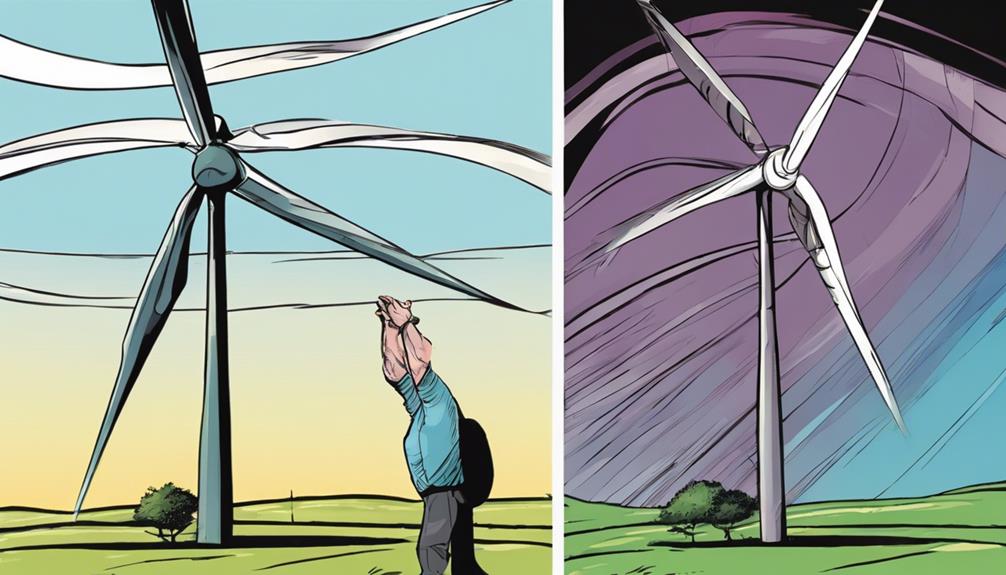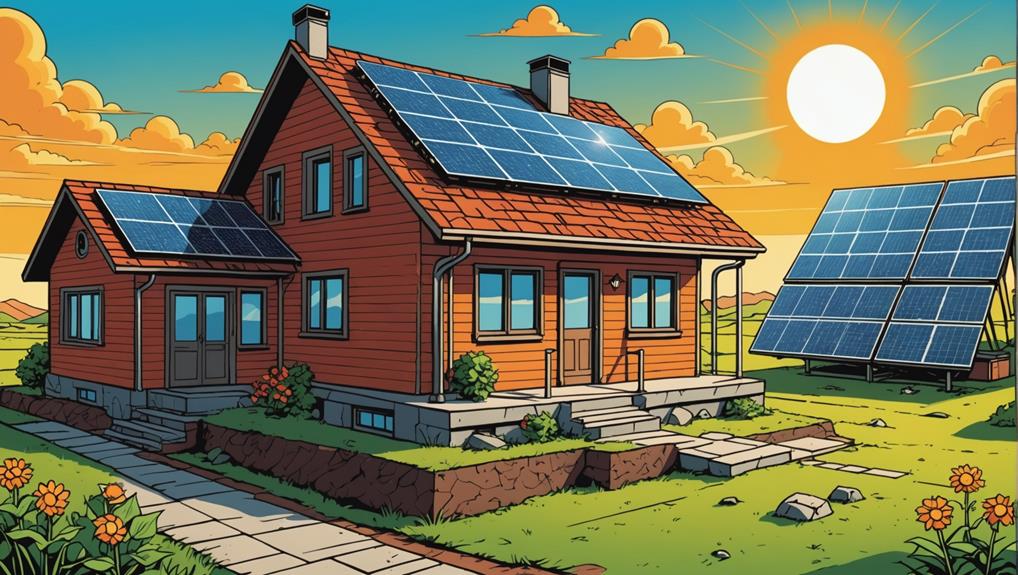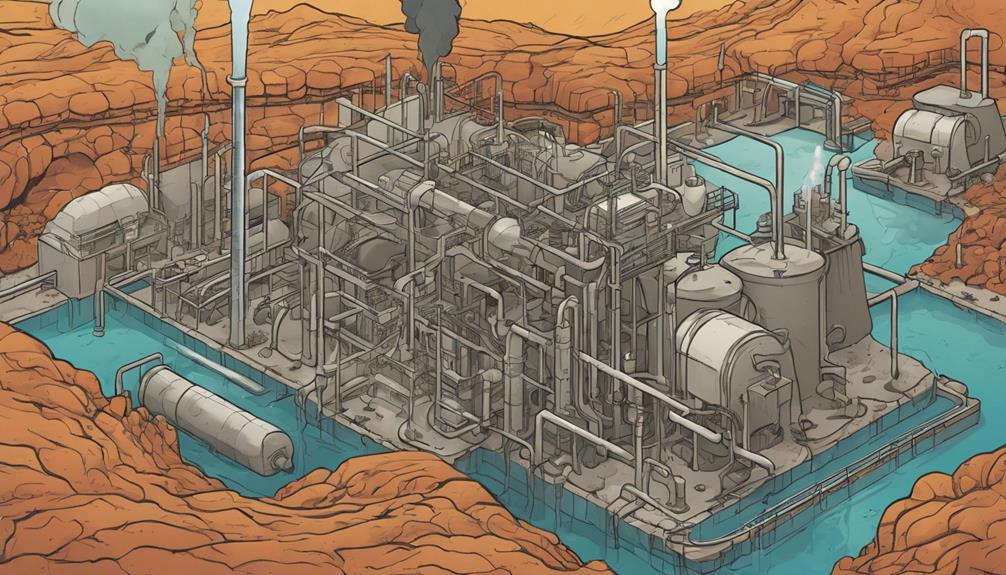When it comes to harnessing wind energy, I know that selecting the right turbine blades is essential. I've got to take into account the trade-offs between cost, performance, and environmental impact. Two-blade turbines are cost-effective, but less efficient in high winds. Three-blade turbines are more energy-efficient, but come with higher manufacturing costs. And, of course, there are four-, five-, and six-blade options to evaluate, each with their own advantages and drawbacks. To maximize energy production while minimizing environmental footprint, I need to carefully assess these factors. Let's take a closer look at the pros and cons of each blade configuration to find the perfect fit.
Key Takeaways
- More blades generally lead to improved energy production, but also increase maintenance needs and initial costs.
- Three-blade turbines offer a balance between energy efficiency and noise reduction, making them suitable for residential areas.
- Two-blade turbines are cost-effective but less efficient in high winds, while four-blade turbines provide stability and increased energy production.
- Environmental impact, including noise levels and bird strikes, must be considered when selecting a blade configuration.
- Local wind speeds and environmental conditions should be carefully assessed to optimize energy production and minimize costs.
Blade Configuration Options
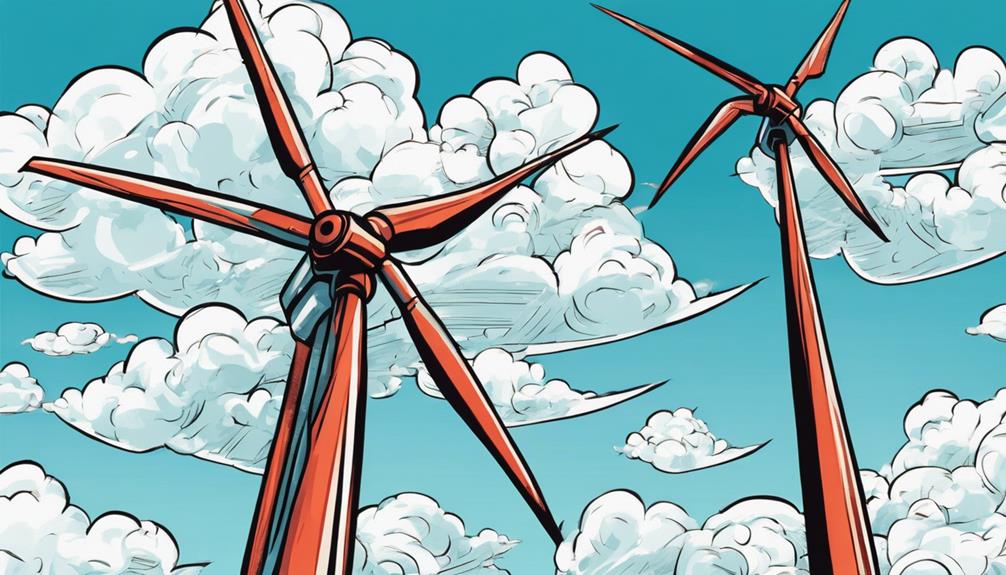
When it comes to wind turbine design, I've five primary blade configuration options to choose from, each with its unique advantages and disadvantages: two-blade, three-blade, four-blade, five-blade, and six-blade turbines.
Two-blade turbines are cost-effective, but less efficient in high winds. They're optimized for environmental conditions and offer noise reduction efficiency.
Three-blade turbines are popular for their efficiency and noise reduction, making them suitable for residential areas.
Four-blade turbines provide stability, cost efficiency, and increased energy production, especially in high wind speeds.
Five-blade turbines offer increased torque and resistance against strong winds, while six-blade turbines boast improved performance, higher energy capture, and reduced noise pollution.
Each configuration has its strengths and weaknesses, and selecting the right one depends on specific project requirements.
Performance Comparison Analysis

I typically assess wind turbine performance by comparing the efficiency, noise levels, and environmental impact of different blade configurations.
Two-blade turbines, for instance, are less efficient in high winds and produce higher noise levels, affecting local wildlife. In contrast, three-blade turbines excel in energy production and noise reduction, making them suitable for residential areas.
As the number of blades increases, so does energy production, but at a higher cost. Four-blade turbines offer stability and cost efficiency, while five-blade turbines provide increased torque and resistance to strong winds.
Six-blade turbines boast improved performance, higher energy capture, and reduced noise pollution. By analyzing these factors, I can determine the most suitable blade configuration for a specific project.
Cost and Maintenance Considerations
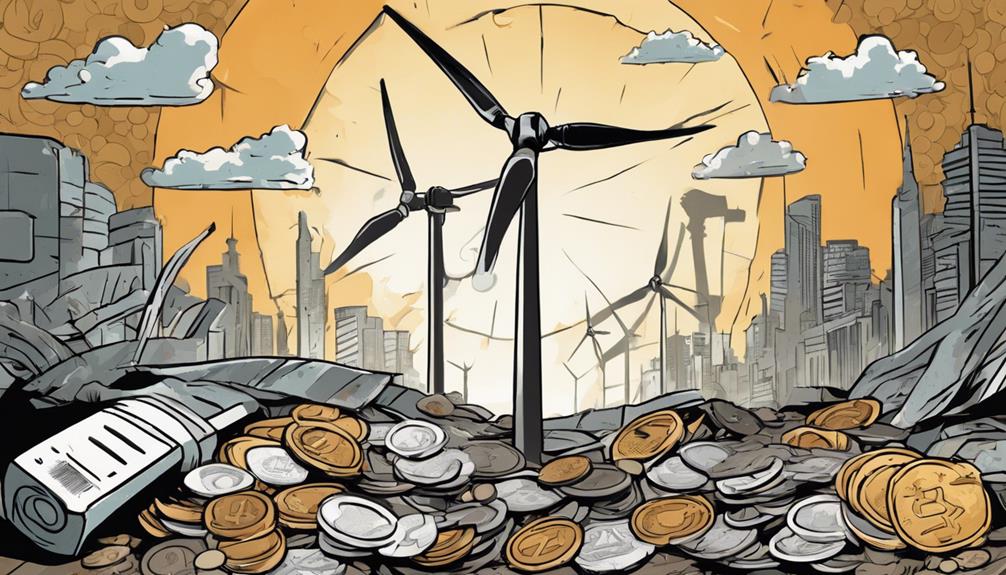
How do the initial investment and ongoing maintenance costs of different blade configurations impact the overall feasibility and sustainability of a wind turbine project?
As I explore the cost and maintenance considerations, it's evident that the number of blades has a significant impact on the bottom line.
Two-blade turbines are cost-effective, but their efficiency gains mightn't outweigh the higher maintenance costs.
Three-blade turbines offer greater efficiency, but their manufacturing costs are higher.
Four-blade turbines provide stability and increased energy production, but at a higher initial cost.
Five-blade and six-blade turbines offer improved performance and energy capture, but their complexity increases maintenance needs.
I must carefully evaluate the trade-offs between cost and performance to ensure my project's long-term viability.
Environmental Impact and Factors
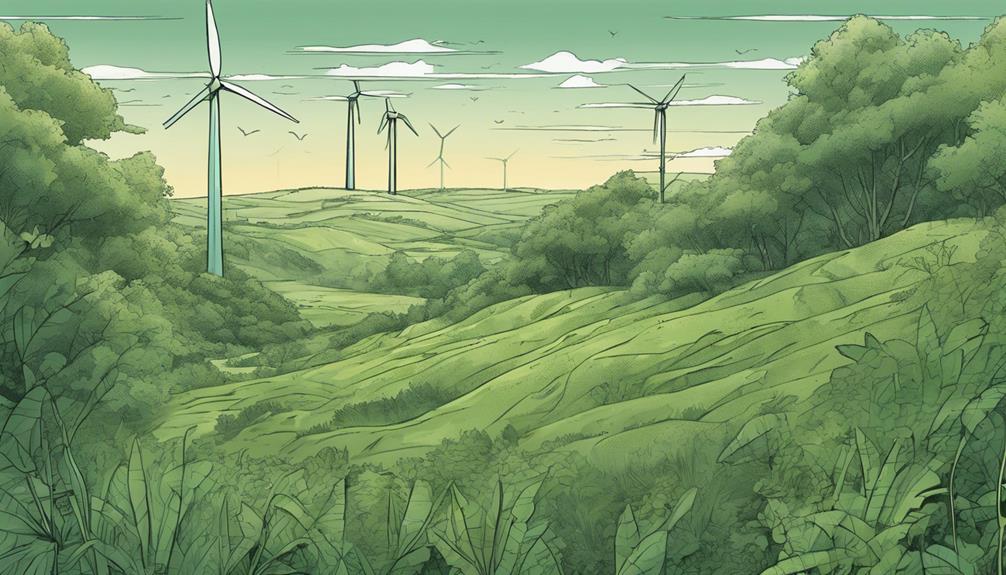
Reflecting on the environmental impact of wind turbines is crucial, as blade configuration and wind speeds directly influence local ecosystems and wildlife habitats. I must weigh the pros and cons of each blade design to minimize harm.
For example, two-blade turbines have higher noise levels and a greater impact on birds, while three-blade turbines have lower noise levels and a reduced impact on birds. I also need to take into account wind speeds, as higher speeds necessitate more blades for stability and energy production.
Furthermore, I must evaluate the trade-offs between cost, performance, and environmental considerations. By carefully analyzing these factors, I can choose the most appropriate blade configuration for my project, ensuring a lower environmental footprint while maximizing energy production.
Optimizing Energy Production

To improve energy production, selecting the right blade setup is crucial, as it directly impacts the turbines' ability to harness wind energy effectively.
When it comes to performance, more blades generally lead to improved energy production. However, it's crucial to take into account local environmental conditions, wind speed, noise levels, and maintenance costs to maximize energy production while minimizing environmental impact.
For example, two-blade turbines are cost-effective but less efficient in high winds, while three-blade turbines are more energy-efficient but have higher manufacturing costs.
Blade Configuration Advantages

I'll explore the advantages of different blade configurations to determine which one best suits my project's needs.
Each configuration has its unique benefits, and understanding these advantages is essential for best energy production.
Here are some key advantages of different blade configurations:
- Two-blade turbines: Cost-effectiveness, efficiency, noise reduction, and simple construction make them an attractive option.
- Three-blade turbines: Energy efficiency, cost savings, noise reduction, and suitability for residential areas make them a popular choice.
- Four-blade turbines: Stability, cost efficiency, increased energy production, and operation in high wind speeds are their key advantages.
- Five-blade turbines: Increased torque, resistance against strong winds, cost-effectiveness, and higher energy efficiency make them a great option.
- Six-blade turbines: Improved performance, higher energy capture, reduced noise pollution, better performance in various conditions, and lower maintenance costs are their benefits.
Selecting the Right Turbine

When it comes to selecting the right turbine, I must weigh the advantages of each blade configuration against my project's specific needs and constraints. I consider factors like performance, energy production, material costs, and environmental conditions.
For instance, if I'm working in a high-wind area, a four- or five-blade turbine might be the best choice for stability and energy production. On the other hand, if noise reduction is a top priority, a three-blade turbine could be the way to go.
Frequently Asked Questions
How Do I Determine the Ideal Turbine Size for My Wind Farm?
'When determining the perfect turbine size for my wind farm, I consider factors like wind speeds, energy demands, and available land to guarantee peak energy production while minimizing environmental impact and costs.'
Can I Mix Different Blade Configurations Within a Single Wind Farm?
I've wondered if mixing different blade configurations within a single wind farm is viable. While it's technically possible, it's important to weigh the trade-offs between performance, cost, and maintenance to guarantee optimal energy production and minimal environmental impact.
What Is the Average Lifespan of a Wind Turbine Blade?
"I'm often asked about the average lifespan of a wind turbine blade. Typically, it's around 20-25 years, depending on environmental conditions, maintenance, and material quality. Proper care can extend its life, reducing replacement costs."
How Do I Ensure Blades Are Properly Secured to the Hub?
'To verify blades are properly secured to the hub, I follow the manufacturer's guidelines, conduct regular inspections, and perform torque checks to guarantee a snug and secure connection, preventing potential failures.'
Are There Any Government Incentives for Wind Turbine Installation?
'As I immerse myself in the world of wind turbines, I'm curious – are there any government incentives for installation? Yes, many governments offer tax credits, grants, and rebates to encourage sustainable energy adoption.'
How Can Wind Turbine Blade Selection Impact Energy Output?
When it comes to optimizing wind turbine energy output, the selection of the right turbine blade is crucial. The design, material, and size of the blade can significantly impact the efficiency and overall energy production of the turbine. By choosing the most suitable blade, the energy output can be maximized.
What Role Does Wind Turbine Blade Selection Play in the Cost of Wind Turbines?
The cost secrets of wind turbines lie in the selection of wind turbine blades. The design, materials, and size of the blades directly impact the overall cost of wind turbines. By choosing the right combination, manufacturers can optimize efficiency and reduce maintenance expenses, ultimately affecting the total cost.
Conclusion
As I reflect on my journey, I realize that mastering wind turbine blade selection is an art that requires patience, precision, and a deep understanding of the intricacies involved.
Like a conductor orchestrating a symphony, the right blade configuration can harmonize with the wind to produce a sweet serenade of sustainability.
With the right notes, we can create a chorus of clean energy that resonates with the planet.



